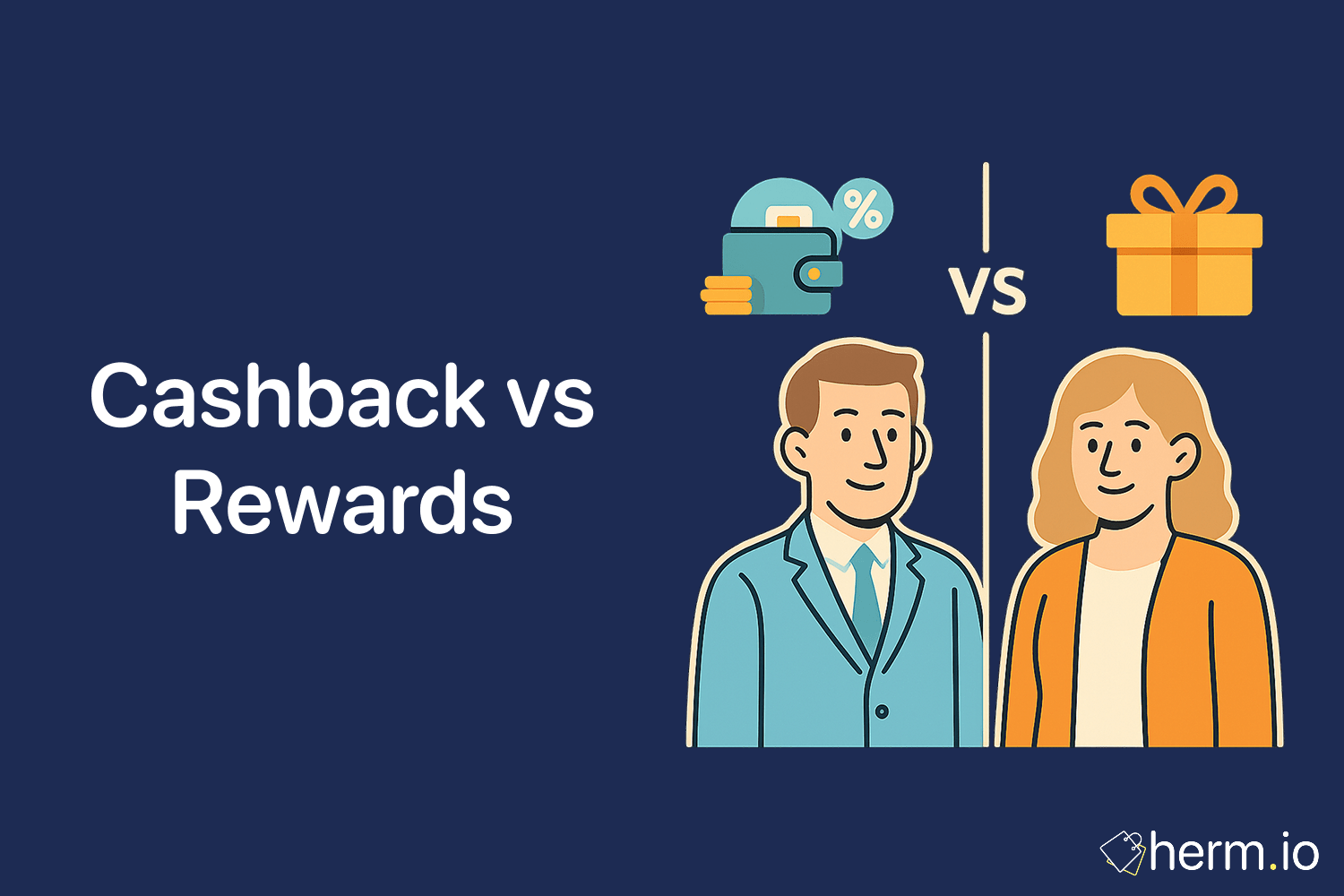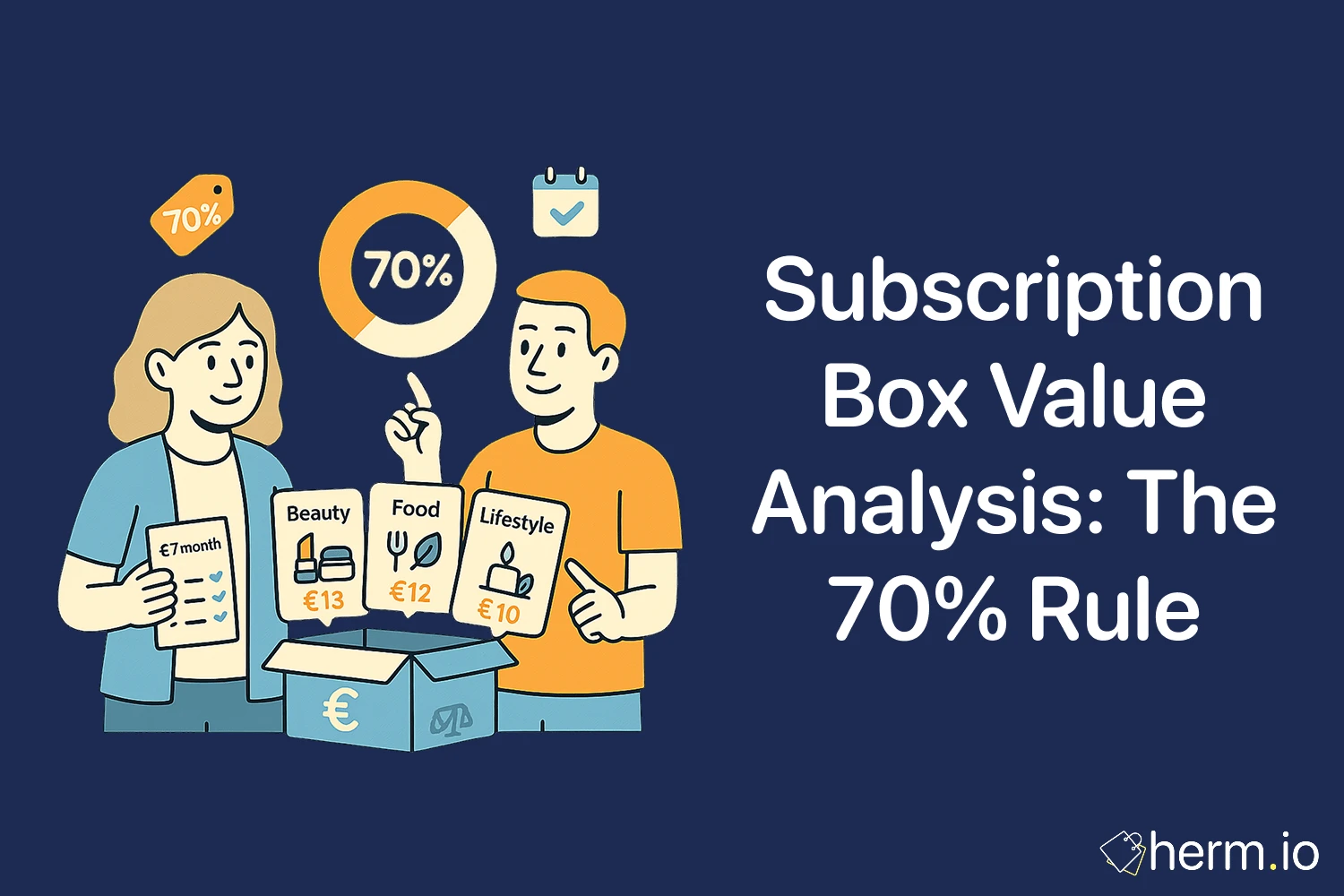
Here's what actually works when choosing between cashback and rewards programmes: stop overthinking the marketing hype and focus on the maths. After analysing hundreds of shopping scenarios, the results speak for themselves—your choice should depend entirely on your spending patterns and redemption discipline.
Most shoppers get caught up in flashy point multipliers and complicated tier systems. Let's cut through the noise and focus on which approach genuinely puts more money back in your pocket.
Quick Wins: Implement These Today to Start Earning More
- Calculate your actual return rate: Multiply your monthly spending by each programme's rate to see real pound values
- Track redemption values: Most rewards points are worth 0.5p-1p each, but strategic redemptions can reach 2p+
- Set redemption reminders: Points expire; cash doesn't—factor this into your decision
- Use stacking strategies: Combine cashback portals with rewards credit cards for double earnings
- Choose based on spending categories: High travel spenders benefit from rewards; everyday shoppers should prioritise cashback
The Cashback Approach: Straightforward Returns
Cashback programmes return a fixed percentage of your spending as actual money. Here's what the numbers reveal about their effectiveness.
How Cashback Actually Works
You earn between 1-5% back on purchases, typically paid quarterly via bank transfer or PayPal. Premium cashback credit cards might charge annual fees of £100-200, but no-fee options exist for everyday spending.
The key advantage? Predictable value. When you see 1.5% cashback, you know exactly what you're getting: £15 back for every £1,000 spent.
Real-World Cashback Performance
Based on typical UK shopping patterns, here's what different cashback rates actually deliver:
- £2,000 monthly spending at 1.5% = £360 annually
- Same spending with 2% on groceries (£600/month) + 1% elsewhere = £384 annually
- Adding quarterly 5% categories (£300/quarter maximum) = Additional £60 annually
The results are consistent and reliable. No blackout dates, no point devaluations, no complex redemption calculations.
The Rewards Programme Strategy: Variable Value Potential
Rewards programmes grant points or miles instead of cash. The critical difference? Point values fluctuate dramatically based on how you redeem them.
Understanding Point Valuations
Here's where most shoppers make costly mistakes. A rewards credit card offering "3 points per pound" sounds impressive until you realise those points might only be worth 0.5p each when redeemed for gift cards.
Strategic redemptions can flip this equation:
- Gift card redemption: 1,000 points = £5 (0.5p per point)
- Statement credit: 1,000 points = £7.50 (0.75p per point)
- Travel booking: 1,000 points = £15 flight value (1.5p per point)
The Premium Rewards Calculation
High-end rewards cards with £450+ annual fees can deliver exceptional value—if you optimise redemptions. Consider this scenario:
A business traveller spending £3,000 monthly earns 108,000 points annually (3x on travel, 1x elsewhere). When redeemed strategically for business-class flights, those points could yield £2,160 in travel value—a 6% effective return rate.
However, redeem those same points poorly, and you're looking at 1.5% returns while paying £450 annually.
The ROI Analysis: Which Approach Wins?
Let me break down the actual performance based on spending profiles:
The Everyday Shopper (£1,500 monthly spending)
- Best cashback option: £270 annually (1.5% no-fee card)
- Best rewards option: £225 annually (1.5x points at 1p redemption value)
- Winner: Cashback by £45 annually
The Travel Enthusiast (£2,500 monthly, 40% travel-related)
- Best cashback option: £375 annually (mixed rate card)
- Best rewards option: £600+ annually (premium travel card with strategic redemptions)
- Winner: Rewards by £225+ annually (after annual fee)
The Category Optimiser (£2,000 monthly, strategic spending)
- Best cashback option: £420 annually (rotating categories + base rate)
- Best rewards option: £480 annually (multiple cards, category bonuses)
- Winner: Rewards by £60 annually
The data shows clear patterns. Cashback wins for straightforward, predictable returns. Rewards win when you can consistently achieve high redemption values.
Implementation Strategy: Choose Your Programme
Based on performance analysis, here's your decision framework:
Choose Cashback If You:
- Prefer guaranteed returns over variable value
- Shop across diverse categories without travel focus
- Want simplicity over optimisation complexity
- Spend less than £2,000 monthly on rewards-eligible purchases
Choose Rewards If You:
- Travel frequently and can access premium redemptions
- Enjoy optimising point values and tracking expiry dates
- Spend heavily in bonus categories (dining, travel, fuel)
- Can achieve consistent 1.5p+ per point redemption values
The Hybrid Approach
Here's what actually works for many shoppers: combine both strategies. Use cashback portals (Rakuten, TopCashback) for the baseline return, then pay with a rewards credit card for additional points.
This stacking approach typically adds 1-2% extra returns without additional complexity. On a £1,500 monthly spend, that's an extra £180-360 annually.
Common Implementation Mistakes
The data reveals these costly errors:
Point Hoarding Without StrategyMany shoppers accumulate points indefinitely, risking expiry or devaluation. Set quarterly redemption reviews to maintain point values.
Ignoring Annual Fee Mathematics
A £200 annual fee requires £10,000+ annual spending at 2% additional return rate just to break even. Calculate fee justification before applying.
Category Spending InflationBonus categories can encourage unnecessary purchases. Track whether increased spending negates rewards benefits.
Poor Redemption TimingTravel rewards offer best value during off-peak booking periods. Gift cards and merchandise typically provide worst value per point.
Frequently Asked Questions
Can I use multiple cashback and rewards programmes simultaneously?
Absolutely, and this often delivers optimal results. Start transactions through cashback portals, then pay with rewards credit cards. You'll earn both portal cashback and card points on identical purchases, typically adding 2-4% combined returns.
Which strategy works better for families with higher spending?
Higher spending volumes generally favour rewards programmes due to bonus category limits and premium card benefits. Families spending £3,000+ monthly often achieve 3-4% effective returns through strategic rewards optimisation, compared to 1.5-2% from cashback programmes.
How do I calculate if a premium rewards card justifies its annual fee?
Multiply your monthly spending by the card's earning rate, then multiply points by realistic redemption values (typically 0.75p-1.25p). Subtract the annual fee from total value. The card pays for itself if the net result exceeds what you'd earn from a no-fee alternative.
What happens to unused points if I cancel a rewards credit card?
Most programmes give you 30-90 days to redeem points after account closure. Some allow point transfers to partner programmes for a fee. Always redeem valuable point balances before cancelling to avoid forfeiting earnings.
The results speak for themselves: both cashback and rewards can deliver excellent returns when matched to your spending patterns. Skip the emotional marketing appeals and run the numbers for your specific situation. Your wallet will thank you for the analytical approach.

Élodie Claire Moreau
I'm an account management professional with 12+ years of experience in campaign strategy, creative direction, and marketing personalization. I partner with marketing teams across industries to deliver results-driven campaigns that connect brands with real people through clear, empathetic communication.

.png)








.png)

.png)
.png)
.png)